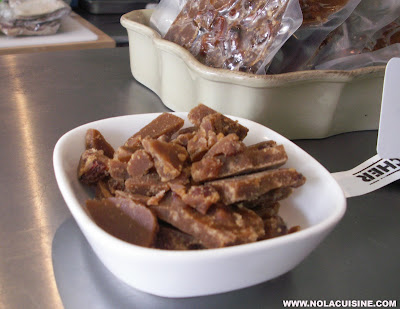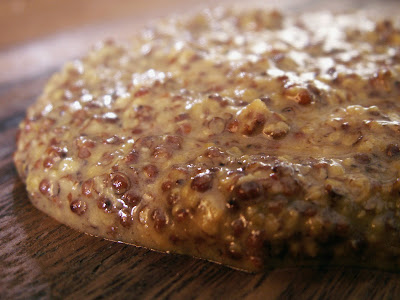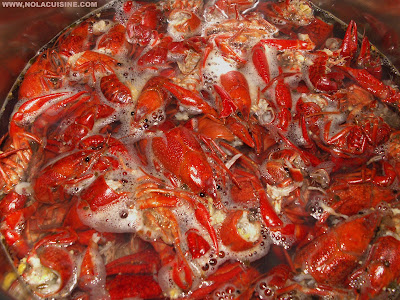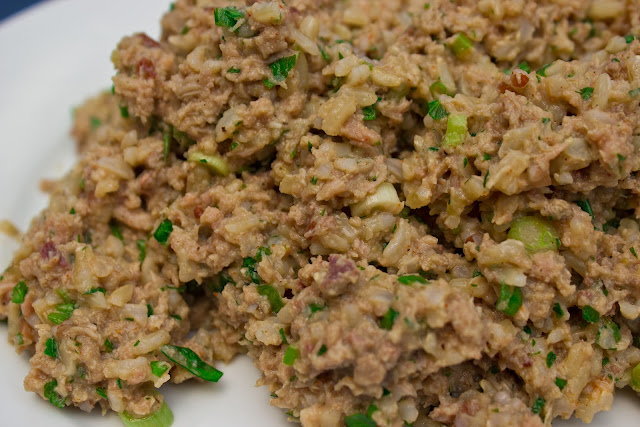 |
| From Homemade Boudin |
I did a bit of a Louisiana Charcuterie tour on my last trip to Louisiana with Boudin, Andouille and Hogshead Cheese being the primary focus. When I’m home in the Detroit area and dreaming of Louisiana, Boudin is one of the things I miss most. So I have to make my own.
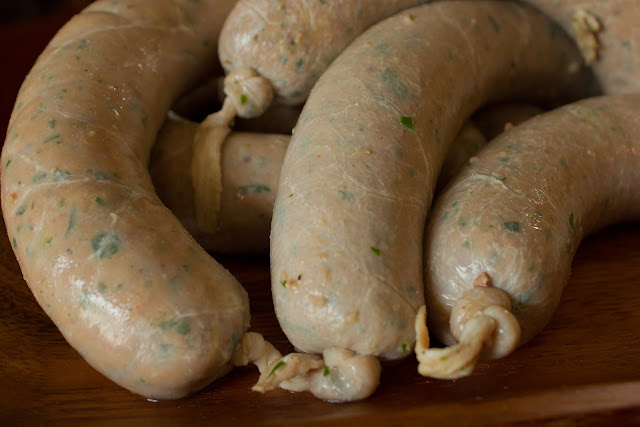 |
| From Homemade Boudin |
For my latest batch of Boudin, I used the very minimally processed Cajun Grain Brown Jasmine Rice that I spoke about in an earlier article. I love the texture and real rice flavor that it adds to the finished product!
 |
| From Cajun Grain Rice – Kinder, Louisiana |
I like just enough liver flavor in my Boudin, without it being over powering, be sure to only use fresh pork liver, and lots of green onions and parsley!
 |
| From Homemade Boudin |
Here is the recipe:
Boudin Recipe
2 1/2 lbs Pork Butt
1/2 lb Fresh Pork liver (not frozen), rinsed
1 Medium Onion, chopped
3 Garlic Cloves, chopped
2 Bay Leaves
1 Bundle of Fresh Thyme, tied
Water to cover by 2 inches
Kosher Salt and Black Pepper
1 tsp Cayenne, or to taste
6 Cups cooked Cajun Grain Brown Jasmine Rice
1 Cup Green Onions, thinly sliced
1 Cup Italian Parsley, finely chopped
Hog Casings (if using)
Cut the pork and liver into 2 inch pieces and place in a Dutch Oven, along with the onion, garlic, thyme, and bay leaves.
 |
| From Homemade Boudin |
Cover with cold water by 2 inches. Season the water well with salt and black pepper. Bring to a boil then lower the heat to a simmer, skim off any scum that rises to the surface. Simmer for about 1 hour or until the meat is very tender. Remove the bay leaves, and thyme, then strain the solids from the broth, reserve some of the broth.
Run the cooked meat and vegetables (while they’re still hot) through a meat grinder or food mill, or you could chop this by hand.
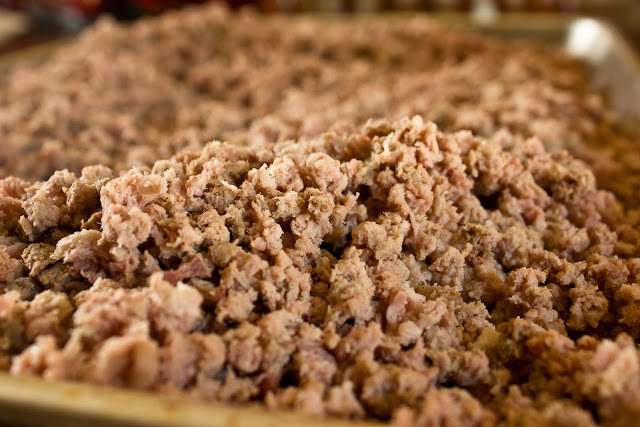 |
| From Homemade Boudin |
Combine the cooked rice with the ground meat mixture, green onions, and parsley. Mix thoroughly and season to taste with Kosher salt, black pepper, and Cayenne. Add some of the reserved cooking liquid to make sure that the finished product is very moist, bearing in mind that the rice will absorb much of the liquid as it sits.
Spread the mixture on a sheet pan and place in the refrigerator to cool.
When the mixture is cool, stuff into prepared hog casings, or form into patties or balls for pan frying. Boudin also makes a great stuffing. Here is a pick of my Boudin Stuffed Barbecue Pork Chops!
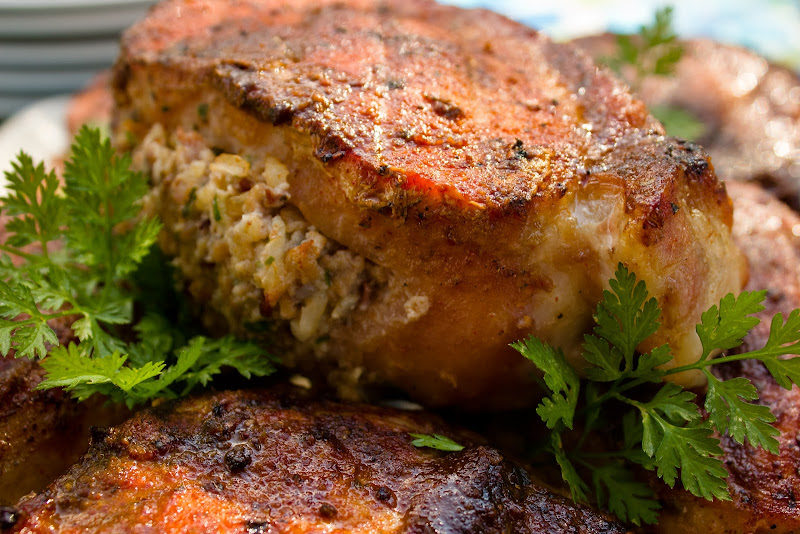 |
| From Homemade Boudin |
To heat the stuffed Boudin links either poach them in water between 165-185 degrees F or brush the casings with a little oil and bake in a 400 degree oven until heated through and the skins are crispy. Boudin is also phenomenal smoked!
Makes 4 1/2 to 5 pounds.
Related Posts:
Andouille Sausage Recipe
Tasso Recipe
Chaurice Sausage Recipe

